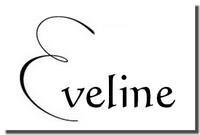





The German-built NS Otto Hahn is one of only four nuclear powered cargo vessels ever built (the others are the NS Savannah, the Russian container ship Sevmorput, and the Japanese NS Mutsu). Configured to carry passengers and ore, the NS Otto Hahn was powered by a single 38 MW reactor which first achieved criticality in 1968. The Otto Hahn made its first port call in Casablanca in 1970 and continued to operate under nuclear power until 1979. In nine years, the Otto Hahn steamed 650,000 nautical miles and visited 33 ports in 22 countries.
The NS Otto Hahn was deactivated in 1979 and between 1979 and 1982, her nuclear propulsion equipment was removed and replaced with standard marine diesels. In 1983, the NS Otto Hahn was recomissioned as the contained ship MS Trophy and leased into commercial marine service. The ship was subsequently renamed MS Norasia Susan (1983), MS Norasia Helga (1985), MS Hua Kang He (1989), MS Anais (1998), and MS Madre (1999).
NS Otto Hahn History
1960
Planning begins for a German-built, trade and research vessel to test the feasibility of nuclear power in civil service.
1963
Keel is laid for the NS Otto Hahn
1964
NS Otto Hahn is launched by its namesake, Dr. Otto Hahn
1968
NS Otto Hahn's reactor first reaches criticality.
1968
October - sea trails begin and NS Otto Hahn is certified for commercial freight transport and research.
1970
NS Otto Hahn makes first port of call in Casablanca
1972
First reactor refueling for NS Otto Hahn. First reactor core operated for 4 years, traveling approximately 250,000 nautical miles while consuming 22 kilograms of Uranium 235.
1979
NS Otto Hahn deactivated. In nine years, the Otto Hahn traveled 650,000 nautical miles, visiting 33 ports in 22 countries.
1979-1982
Removal and disposal of NS Otto Hahn reactor core and propulsion equipment.
1982
NS Otto Hahn converted from ore carrier to container ship with marine diesel drive.
1983
NS Otto Hahn renamed MS Trophy. Sea trials with new diesel propulsion units begin.
1983
Chartered service as MS Norasia Susan
1985
Chartered service as MS Norasia Helga
1989
Chartered services as MS Hua Kang He working for a shipping company head quartered in Shanghai.
Unknown date
Chartered Services as MS Madre
NS Otto Hahn Technical Specifications
Overall length
172.05 meters
Width
23.40 meters
Freeboard
5.33 meters
Displacement
25,790 tons
Load carrying capacity
14,040 tons
Waterproof compartments
14
Loading spaces
6
Crew
63
Research personnel
35 max
Top speed
17 knots
Reactor
38 MW
Reactor volume
35 m³
Design pressure/temperature
85 kp/cm² - 300°C
Builders
German & Babcock Wilcox Dampfkesselwerke AG and INTERCAtom
Dr. Otto Hahn (1879-1968) In 1938, Otto Hahn repeated Fermi's experiments of bombarding uranium with neutrons. Hahn and co-worker Fritz Strassmann discovered three isotopes of barium had been produced. This was incredible because the mass of barium is about half of uranium and no known reaction could explain such a huge change. Hahn, a chemist, could not offer an explanation. He wrote to Lise Meitner, his longtime collaborator, describing his findings and asking "Perhaps you can suggest some fantastic explanation," which she explained as nuclear fission. Nevertheless, despite the contributions of Strassmann and Meitner, it was Hahn who was awarded the 1945 Nobel Prize in chemistry for the discovery. Unfortunately, Hahn was not at the awards ceremony to receive his prize. At the time he learned of the award, he was being held by the British who were seeking information from him about the failed German effort to develop an atomic bomb. As the chairman of the Nobel Committee for Chemistry reported "Professor Hahn has informed us that he is regrettably unable to attend this ceremony."








Keine Kommentare:
Kommentar veröffentlichen